
Swagelok® Pressure Gauges
Achieve precise pressure measurement in industrial, ultrahigh-purity, and sanitary applications with a variety of Swagelok pressure gauges.
Request Pressure Gauge InformationSwagelok® industrial and process pressure gauges deliver precise pressure measurement for a wide range of applications, including general industrial, ultrahigh-purity, and sanitary environments. Available in various pressure ranges, dial sizes, connections, mountings, and configurations, all Swagelok measurement gauges are factory-calibrated and pressure-tested to provide dependable performance.
Swagelok pressure gauge options include:
- Swagelok® PGI series industrial and process pressure gauges, available unfilled or liquid-filled
- Swagelok® PBG series pressure gauges designed specifically for panel builders
- Swagelok® PGU series ultrahigh-purity and Swagelok® PGC series clean dry air pressure gauges
- Swagelok® PGN series general-purpose pressure gauges, ECE R110-approved
Pressure Gauge Categories
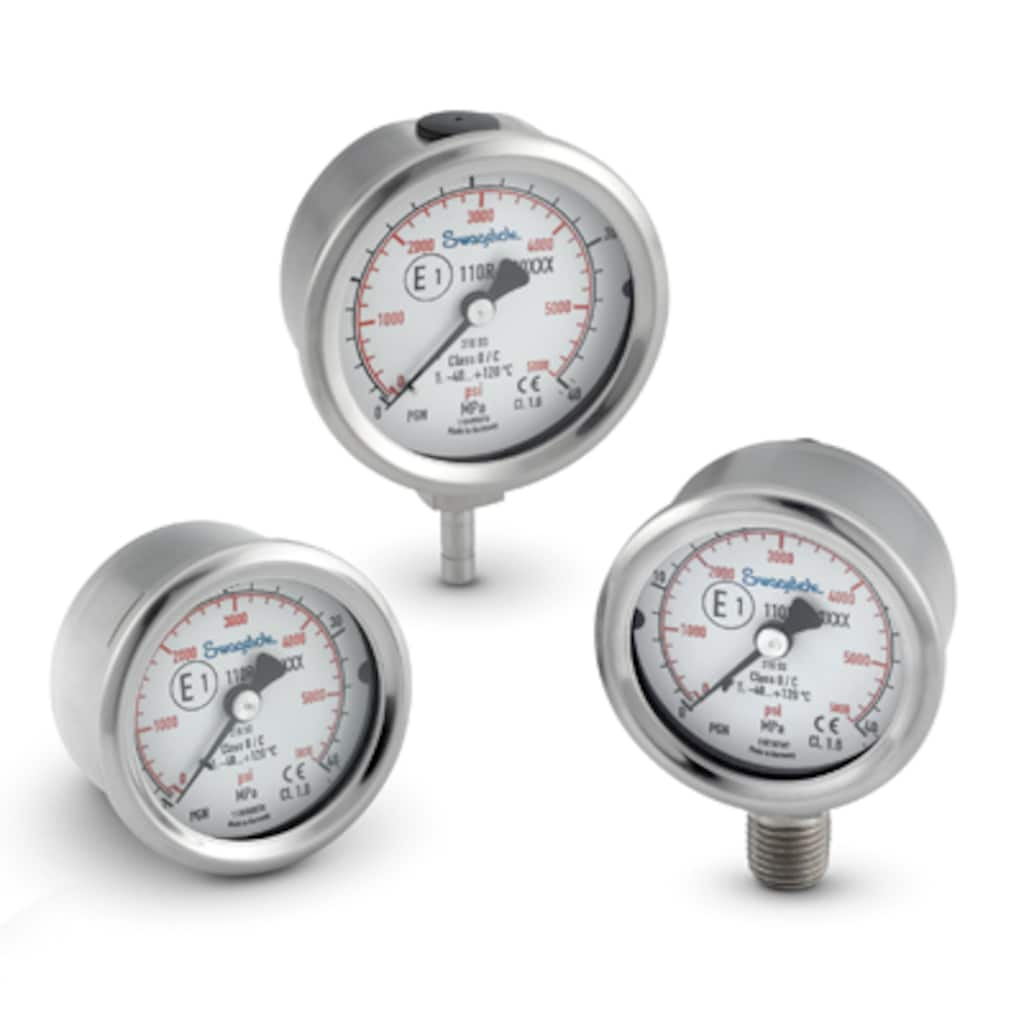
Pressure Gauges, General Purpose Gauge with ECE R110 Approval, PGN Series
Achieve precise pressure readings with ECE R110-certified gauges for use in compressed natural gas vehicles.
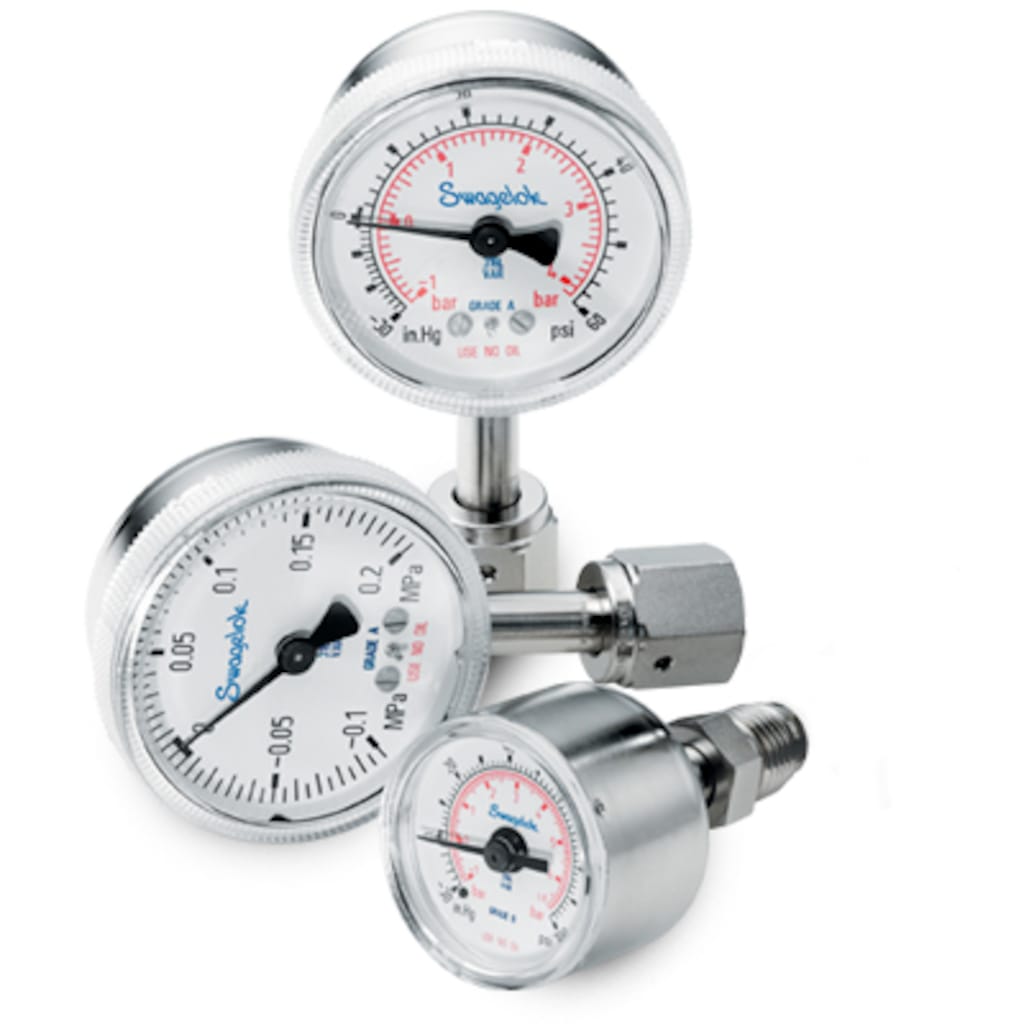
Pressure Gauges, Ultrahigh-Purity and Clean Dry Air
Monitor positive system pressure and vacuum with a ultrahigh-purity and clean dry air pressure gauges featuring a Bourdon tube.
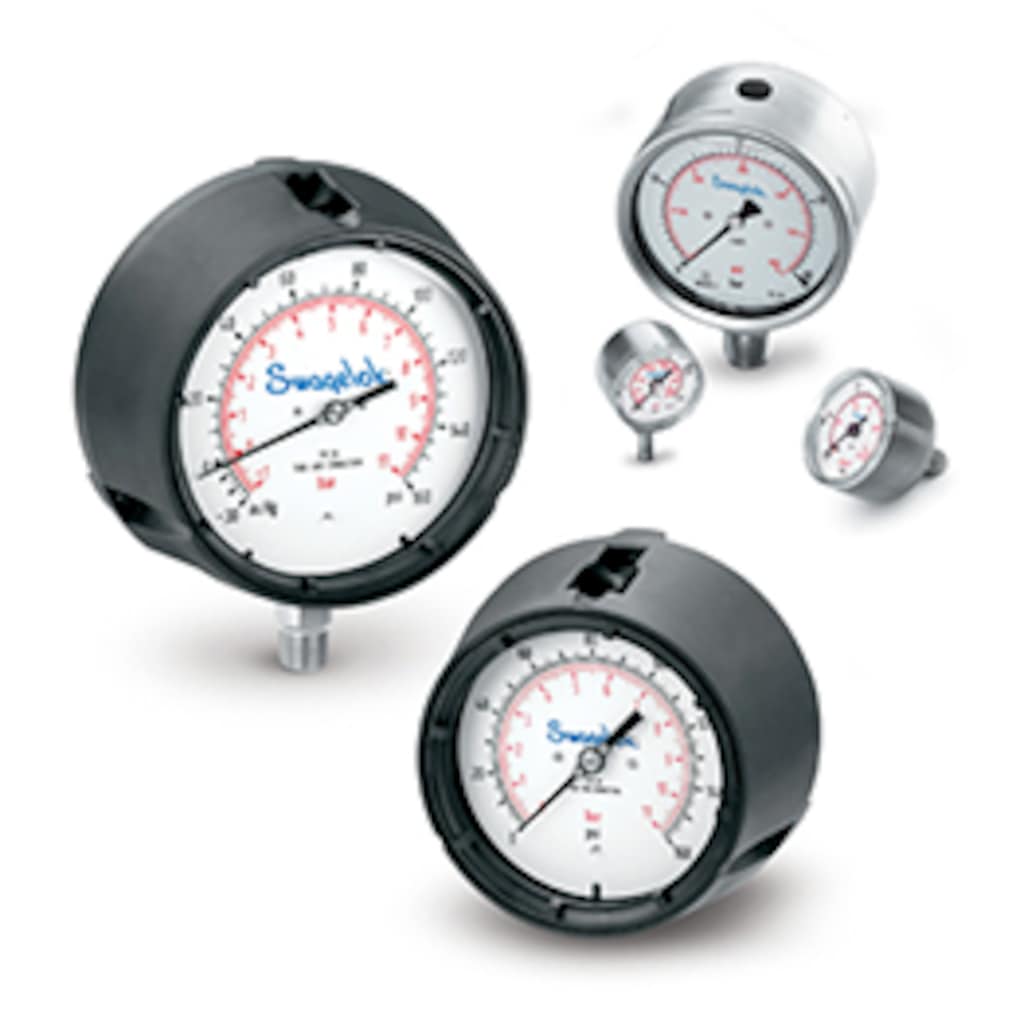
Process Pressure Gauges and Pressure Gauges for Panel Builders, PGI and PBG Series
Provide accurate pressure measurements in industrial applications, monitoring vacuum and positive pressures up to 15 000 psi, 1000 bar, or 100 mpa.
Pressure Gauges Catalogs
Locate detailed product information, including materials of construction, pressure and temperature ratings, options, and accessories.
Features: 50 mm (1 1/2 and 2 in.) dial sizes; Accuracy in accordance with ASME B40.100; 316L VAR end connections (PGU series); Center-back and lower mount configurations
Features: Monitor vacuum and positive system pressures up to 15 000 psi, 1000 bar, or 100 000 kPa; 2 1/2 in. (63 mm) dial size; Fits industry-standard 2 9/16 in. (65.0 mm) panel hole cutout
Features: ECE R110 approval for use on compressed natural gas vehicles; 50 and 63 mm (2 and 2 1/2 in.) dial sizes; Orifice: 0.023 in. (0.58 mm); Polycarbonate lens for additional protection; Transducer output available on 50 mm gauge with brass end connections
Features: 40, 50, 63, 100, 115, and 160 mm (1 1/2, 2, 2 1/2, 4, 4 1/2 and 6 in.) dial sizes; Accuracy in accordance with ASME, EN, and JIS; Available with a variety of end connections, including Swagelok® tube adapters; Center-back, lower-back, and lower mount configurations; Stainless steel and reinforced thermoplastic construction; Available unfilled or liquid filled
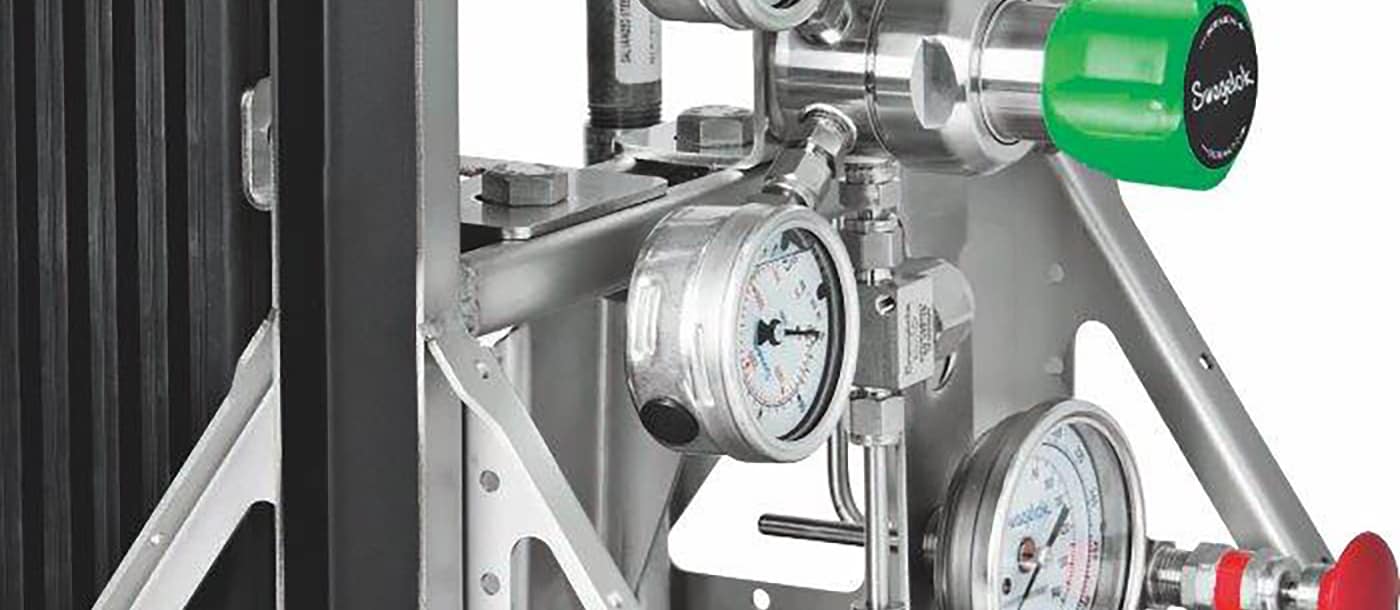
Small Footprint, Large Impact: How to Detect and Protect Against Gauge Failures
Learn to recognize the signs of a failing gauge and avoid risk to employees and costly downtime to make repairs.
Learn to Prevent Gauge FailureSwagelok Resources Curated for You

流体系统泄漏的常见原因和成本
在大多数工厂,流体系统泄漏都比较常见。了解发生泄漏的方式和原因、泄漏的定位和检测方式,以及如何制定策略来解决与减少工厂范围的泄漏问题。
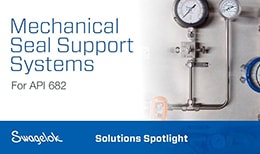
机械密封支持系统解决方案聚焦
查看世伟洛克®适用于 API 标准 682 的机械密封支持系统如何纳入 API 682 的优秀实践,然后更进一步,纳入使系统易于安装和易于维护的设计原则。

How Fluid System Fabrication can Alleviate Resource Constraints
There are several common fluid systems that successful plant operations depend on, and choosing the right fabrication provider can be highly beneficial if you’re short on resources.

Process Measurement – Impulse Line Best Practices
It can be difficult to identify issues within your process instrumentation application if you focus solely on the transmitter. Learn how to solve problems within your process instrumentation line with tips and best practices from Swagelok.
